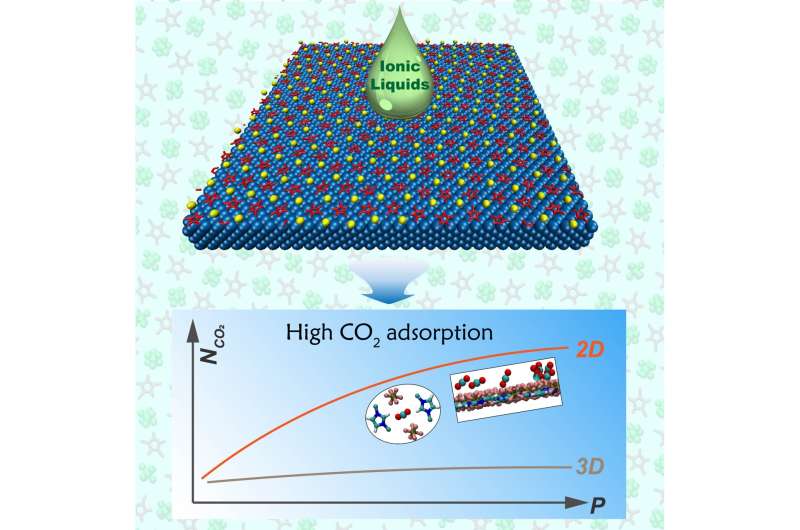Two-dimensional ionic liquids to effectively capture carbon dioxide

In the context of global concerns about climate change and greenhouse gas control, a new technology for CO2 capture, utilization, and storage has attracted broad attention.
Ionic liquids, composed of only cations and anions, are considered a new type of CO2 adsorbent due to their ultralow vapor pressure and environmentally friendly features.
Recently, a group led by Profs Zhang Suojiang and He Hongyan from the Institute of Process Engineering (IPE) of the Chinese Academy of Sciences (CAS) has found that two-dimensional ionic liquids show a completely different melting behavior than when in bulk phase, leading to a high CO2 adsorption capacity and structural robustness during the CO2 adsorption-desorption process.
This study was published in Cell Reports Physical Science on July 12.
The researchers found that ionic liquids can form a two-dimensional-monolayer, ordered, checkerboard structure when supported by a metal surface. The two-dimensional ionic liquids exhibited anomalous stepwise melting processes, involving localized-rotated, out-of-plane-flipped, and fully disordered states, rather than the single melting point for the bulk ionic liquids.
"Anions and cations are arranged together in a checkerboard manner, thus forming a two-dimensional, ordered Z-bond network. This makes it more likely for the multi-step melting behaviors such as ionic rotation and flip," said Prof. He.
The massive molecular dynamics simulation indicates that the two-dimensional ionic liquids show excellent performance for CO2 capture due to the unsaturated and exposed Z-bonds. The mole fraction of CO2 adsorbed by two-dimensional [Mmim] PF6 was improved by at least one order of magnitude compared with the corresponding bulk ionic liquids.
"The higher CO2 adsorption capability suggests that such two-dimensional ionic liquids could serve as functional layers of the catalyst to enhance the mass transfer process of CO2, which is important for the fixation and conversion of CO2," said Associate Professor Wang Yanlei of IPE.
This two-dimensional editing technique for ionic liquids is expected to provide a new method for the precise control and functional design of liquids, which is promising for various chemical engineering applications involving solvents, electrolytes, and liquid catalysts.
More information: Hongyan He, Two dimensional ionic liquids with anomalous stepwise melting process and ultrahigh CO2 adsorption capacity, Cell Reports Physical Science (2022). DOI: 10.1016/j.xcrp.2022.100979. www.cell.com/cell-reports-phys … 2666-3864(22)00265-X
Journal information: Cell Reports Physical Science
Provided by Chinese Academy of Sciences




















